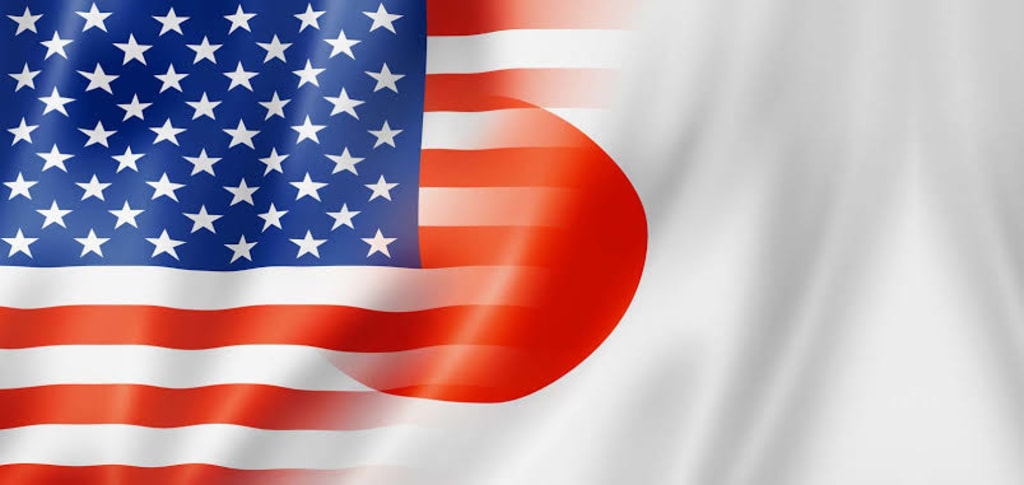Content warning
This story may contain sensitive material or discuss topics that some readers may find distressing. Reader discretion is advised. The views and opinions expressed in this story are those of the author and do not necessarily reflect the official policy or position of Vocal.
Japan and the United States: Different but Alike
By Haider Ali

1 The culture of a place is an integral part of its society whether that place is a remote Indian village in Brazil or a highly industrialized city in Western Europe. The culture of Japan fascinates people in the United States because, at first glance, it seems so different. Everything that characterizes the United States – newness, racial heterogeneity, vast territory, informality, and ethic of individualism – is absent in Japan. There, one finds an ancient and homogenous society, an ethic that emphasizes the importance of groups, and a tradition of formal behavior governing every aspect of daily living, from drinking tea to saying hello. On the surface at least, U.S. and Japanese societies seem totally opposite.
2 One obvious difference is the people. Japan is a homogenous society of one nationality and a few underrepresented minority groups, such as the ethnic Chinese and Koreans. All areas of government and society are controlled by the Japanese majority. In contrast, although the United States is a country with originally European roots, its liberal immigration policies have resulted in it becoming a heterogeneous society of many ethnicities – Europeans, Africans, Asians, and Latinos. All are represented in all areas of U.S. society, including business, education, and politics.
3 Other areas of difference between Japan and the United States involve issues of group interaction and a sense of space. Whereas people in the United States pride themselves on individualism and informality, Japanese value groups and formality. People in the United States admire and reward a person who rises above the crowd; in contrast, a Japanese proverb says, “The nail that sticks up gets hammered down.” In addition, while North Americans’ sense of size and scale developed out of the vastness of the content, Japanese genius lies in the diminutive and miniature. For example, the United States builds airplanes, while Japan produces transistors.
4 In spite of these differences, these two apparently opposite cultures share several important experiences.
5 Both for example, have transplanted cultures. Each nation has a “mother society – China for Japan and Great Britain for the United States – that has influenced the daughter in countless ways: in language, religion, art, literature, social customs, and ways of thinking. Japan, of course, has more time than the United States to work out its unique interpretation of the older Chinese culture, but both countries reflect their cultural ancestry.
6 Both societies, moreover, have developed the art of business and commerce, of buying and selling, of advertising and mass producing, to the highest levels. Few sights are more reassuring to people from the United States than the tens of thousands of busy stores in Japan, especially the beautiful, well-stocked department stores. To U.S. eyes, they seem just like Macy’s or Neiman Marcus at home. In addition, both Japan and the United States are consumer societies. The people of both countries love to shop and are enthusiastic consumers of convenience products and fast foods. Vending machines selling everything from fresh flowers to hot coffee are as popular in Japan as they are in the United States, and fast-food noodle shops are as common in Japan as McDonald’s restaurants are in the United States.
7 A final similarity is that both Japanese and people in the United States have always emphasized the importance of work, and both are paying penalties for their commitment to it: increasing stress and weakening family bonds. People in the United States, especially those in business and in the professions, regularly put in twelve or more hours a day at their jobs, just as many Japanese executives do. Also, while the normal Japanese workweek is six days, many people in the United States who want to get ahead voluntarily work on Saturday and/or Sunday in addition to their normal five-day workweek.
8 Japan and the United States: different, yet alike. Although the two societies differ in many areas such as racial heterogeneity versus racial homogeneity, individualism versus group cooperation, and informal versus formal forms of behavior, they share more than one common experience. Furthermore, their differences probably contribute as much as their similarities toward the mutual interest the two countries have in each other. It will be interesting to see where this reciprocal fascination leads in the future.
About the Creator
Enjoyed the story? Support the Creator.
Subscribe for free to receive all their stories in your feed. You could also pledge your support or give them a one-off tip, letting them know you appreciate their work.





Comments
There are no comments for this story
Be the first to respond and start the conversation.